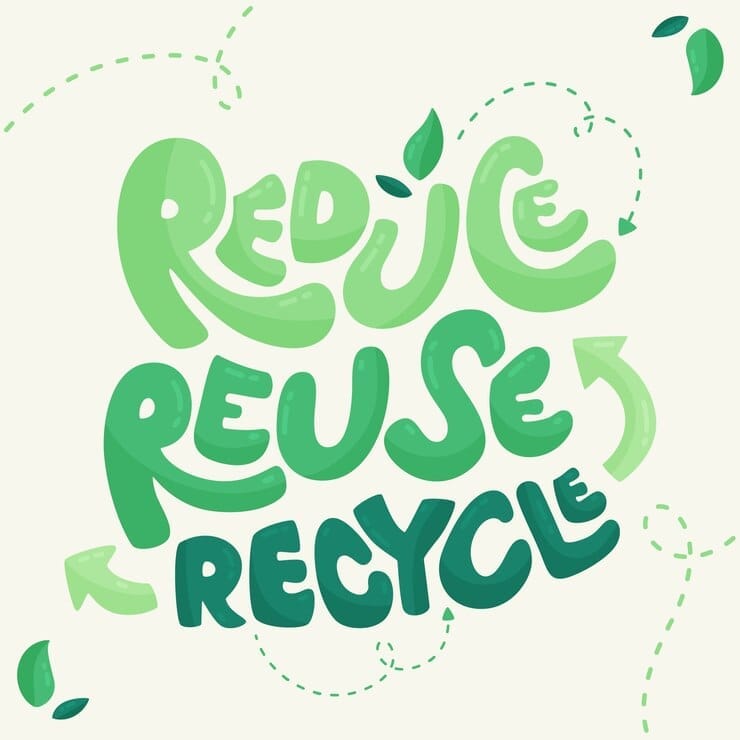The 4 R’s of Waste Management: Building a Cleaner, Better Tomorrow
The 4 R’s of Waste Management: Building a Cleaner, Better Tomorrow

The 4 R’s of Waste Management
Introduction
Waste management has become a critical issue in today’s fast-paced world. With the growing population and industrialization, the amount of waste generated is escalating rapidly. However, adopting the “4 R’s of Waste Management“—Reduce, Reuse, Recycle, and Recover—can significantly mitigate the environmental burden and pave the way toward a cleaner, sustainable future. Let’s delve into these principles and understand their impact.
Outline of the Article
- What Are the 4 R’s of Waste Management?
- The Importance of the 4 R’s
- Reduce – The First Step
- What Does It Mean to Reduce?
- Practical Ways to Reduce Waste
- Case Studies on Reduction Success Stories
- Reuse – Giving Items a Second Life
- How Reusing Benefits the Environment
- Everyday Examples of Reuse
- Businesses Promoting Reuse
- Recycle – Transforming Waste into Resources
- The Recycling Process Explained
- What Can Be Recycled?
- Recycling Statistics Worldwide
- Recover – Extracting Value from Waste
- Energy Recovery Techniques
- Examples of Waste-to-Energy Projects
- Pros and Cons of Waste Recovery
- How Individuals Can Practice the 4 R’s
- The Role of Governments and Businesses
- The Future of Waste Management
- Conclusion
- FAQs
What Are the 4 R’s of Waste Management?
The 4 R’s—Reduce, Reuse, Recycle, and Recover—are guiding principles to minimize waste and its environmental impact. They encourage a shift toward sustainable practices by minimizing resource use, maximizing resource utilization, and repurposing waste into valuable assets.
The Importance of the 4 R’s
The 4 R’s not only reduce landfill waste but also save natural resources, conserve energy, and reduce pollution. By following these principles, individuals and organizations can contribute significantly to a sustainable future.

Reduce – The First Step
What Does It Mean to Reduce?
Reduction focuses on minimizing waste at its source. This means cutting down on unnecessary consumption and finding smarter, more sustainable ways to utilize resources.
Practical Ways to Reduce Waste
- Opt for Digital Solutions: Reduce paper usage by going digital.
- Purchase Wisely: Buy only what you need and in sustainable packaging.
- Use Energy-Efficient Products: Appliances and electronics that consume less energy create less waste over time.
| Action | Impact |
|---|---|
| Switching to e-receipts | Reduces paper waste significantly |
| Bulk shopping | Minimizes packaging waste |
Case Studies on Reduction Success Stories
- Sweden’s Waste Management Model: By adopting reduction strategies, Sweden has drastically minimized its household waste production.
Reuse – Giving Items a Second Life
How Reusing Benefits the Environment
Reusing items reduces the need for new raw materials, thereby decreasing pollution and energy consumption.
Everyday Examples of Reuse
- Reusable Shopping Bags: A simple yet effective solution to reduce plastic bag waste.
- Repurposing Jars: Glass jars can serve as storage containers.
Businesses Promoting Reuse
Brands like Patagonia encourage customers to repair and reuse products instead of discarding them.
Recycle – Transforming Waste into Resources
The Recycling Process Explained
Recycling includes gathering waste materials, handling them, and transforming them into new items..
What Can Be Recycled?
- Paper: Newspapers, magazines, and cardboard.
- Plastic: Bottles and containers with recycling codes.
- Metal: Aluminum cans and steel products.
Recycling Statistics Worldwide
According to recent data, only 9% of plastic waste generated globally has been recycled, highlighting the need for stronger recycling initiatives.

Recover – Extracting Value from Waste
Energy Recovery Techniques
Recovery includes converting non-recyclable waste materials into usable energy. This can be done through processes like incineration and anaerobic digestion.
Examples of Waste-to-Energy Projects
- Norway’s Waste-to-Energy Plants: Norway has successfully converted 50% of its waste into energy.
Pros and Cons of Waste Recovery
| Advantages | Disadvantages |
|---|---|
| Reduces landfill usage | High initial investment costs |
| Generates renewable energy | May release greenhouse gases |
How Individuals Can Practice the 4 R’s
- Start Small: Use reusable water bottles and refuse single-use plastics.
- Compost: Turn organic waste into nutrient-rich compost.
- Participate: Support local recycling programs and educate others.
The Role of Governments and Businesses
Governments must implement strict waste management policies, while businesses should invest in sustainable practices. Initiatives like extended producer responsibility (EPR) can encourage manufacturers to take accountability for their products’ end-of-life disposal.
The Future of Waste Management
The future holds immense potential for innovation, such as smart waste bins, AI-driven sorting facilities, and increased adoption of biodegradable materials.
Conclusion
The 4 R’s of waste management—Reduce, Reuse, Recycle, and Recover—are essential to building a sustainable future. By embracing these principles, individuals, businesses, and governments can collectively reduce environmental harm and create a healthier planet for future generations.
FAQs
1. What is the most important R in waste management?
Reducing waste at the source is often considered the most impactful as it minimizes resource consumption from the start.
2. Can everything be recycled?
Not all materials can be recycled. Items like greasy pizza boxes, broken ceramics, and certain plastics may not be recyclable.
3. How does energy recovery work?
Energy recovery involves converting non-recyclable waste into electricity, heat, or fuel through processes like incineration or gasification.
4. What are some easy ways to start practicing the 4 R’s?
Start with small changes like using reusable bags, composting kitchen waste, and supporting brands that prioritize sustainability.
5. Is waste management a global issue?
Absolutely! Waste management is a global challenge that requires collaborative efforts from individuals, businesses, and governments worldwide.
Please don’t forget to leave a review.

3 Comments